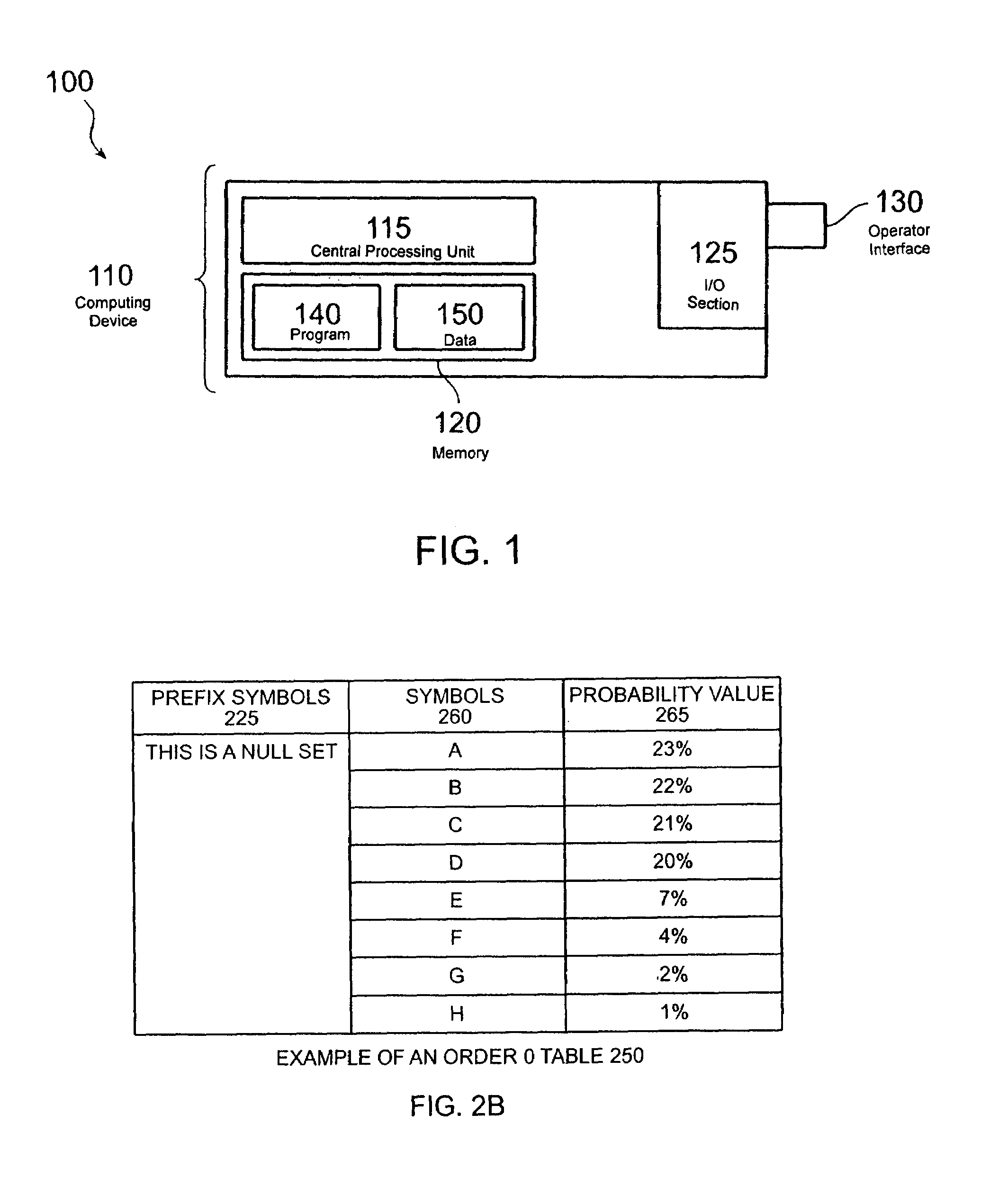Bitwise adaptive encoding using prefix prediction
a prefix prediction and adaptive encoding technology, applied in the field of compression of data, can solve the problems of not being able to achieve the desired degree of compression, arithmetic coding presents a variety of drawbacks, and the probabilities assigned to characters are not known a priori, so as to reduce the complexity of arithmetic coding, and optimize the effect of encoding symbols
- Summary
- Abstract
- Description
- Claims
- Application Information
AI Technical Summary
Benefits of technology
Problems solved by technology
Method used
Image
Examples
Embodiment Construction
[0023]In the following description, a preferred embodiment of the invention is described with regard to preferred process steps and data structures. Embodiments of the invention can be implemented using general purpose processors or special purpose processors operating under program control, or other circuits, adapted to particular process steps and data structures described herein. Implementation of the process steps and data structures described herein would not require undue experimentation or further investigation.
System Elements
[0024]FIG. 1 is a block diagram of an encoding system with prefix prediction.
[0025]An encoding system using prefix prediction (indicated by general reference character 100) includes a computing device 110. The computing device 110 comprises a central processing unit 115, a memory 120, and an input / output (I.O.) section 125 coupled to an operator interface 130. The memory 120 can include any device for storing relatively large amounts of information, such...
PUM
 Login to View More
Login to View More Abstract
Description
Claims
Application Information
 Login to View More
Login to View More - R&D
- Intellectual Property
- Life Sciences
- Materials
- Tech Scout
- Unparalleled Data Quality
- Higher Quality Content
- 60% Fewer Hallucinations
Browse by: Latest US Patents, China's latest patents, Technical Efficacy Thesaurus, Application Domain, Technology Topic, Popular Technical Reports.
© 2025 PatSnap. All rights reserved.Legal|Privacy policy|Modern Slavery Act Transparency Statement|Sitemap|About US| Contact US: help@patsnap.com



